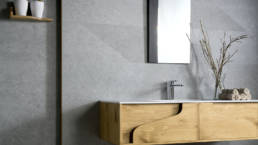JAPANDI: WHEN JAPANESE AND SCANDINAVIAN STYLES MEET
The minimalist style we associate with Japan and some Scandinavian countries has consistently been a popular trend in recent years. What happens when they merge? Let’s talk about Japandi style.
Defining a new style
Part of the magic of a fusion style like Japandi is to identify the natural bases of each one we are going to combine and look for a perfect balance. Japandi is an intelligent fusion of Scandi hygge and Japanese design, resulting in an environment that is full of calmness, a true sanctuary.
The fusion starts with serene minimalism and adds the warmth of textures and natural materials, such as stones and woods. Neutral color palettes, organic shapes, and clean lines to form sets in which each element has a function there is no excess.
The unusual conditions of recent years have shown that our homes should be considered more than just a place to sleep. Of course, there has to be room for inspiration and work and study. But it is not about filling the spaces with furniture and objects but about incorporating pieces that, together with their functional character, also allow us to relax. We use the harmony of the elements to be part of that harmony ourselves.
Keys to bringing the Japandi style to your home
Lightwoods
If there is something that defines the Scandinavian style is light and natural woods in contrast to furniture made of darker woods that can include leather and metal details. Remember that to achieve these effects, and our wood-looking tiles can be a perfect ally.
Classic furniture
The pieces of the mid-twentieth century, in which styles of simple lines and noble materials are combined, fit perfectly with the concept of Japandi. You can also consider the pieces made with bamboo.
Continuous spaces
A minimal visual disturbance always conveys an organic and encompassing feeling, so sliding doors, which ideally incorporate transparent sheets so that light can pass through, are an alternative reminiscent of paper panel divisions in the traditional Japanese home.
Delicate textiles
They can be in the tones achieved with the technique known as Shibori or tie-dye, which incorporates neutral tones and indigo, dark blue, and simple patterns. It is not only about adding color but also textures that invite touch.
Porcelain and natural stone
From the unique veins of natural stone to stone-look tiles, this can be the element capable of giving coherence to the entire decoration. They may serve as an element of connection or contrast with your furniture.
Green details
Floral arrangements, dried branches of trees of symbolic cultural value such as the cherry tree, and even details such as various types of bonsai accent the relationship between the interior of the house and the nature outside. This is not cold austerity, but a focus on the essentials.
Need more inspiration? Visit us at our tile stores: Prosein Doral tile store and Prosein Aventura tile store.



